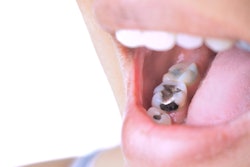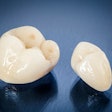Chairside restorations have become part of many dental practices, offering both convenience and efficiency. With that in mind, I recently sat down with Kricket Doker, a certified dental assistant and registered dental technician, to dive into how dental patients can receive better in-office restorations.
 Kricket Doker, RDT, CDA.
Kricket Doker, RDT, CDA.
Doker told me one common mistake clinicians often make with chairside restorations is starting with the wrong shade.
"The biggest mistake with these cases that I'll see another clinician do is they start with the wrong shade or the wrong value. And so then it's really difficult to kind of recoup that initial starting point that was bad," Doker said.
She believes it is crucial to choose the proper shade and value from the beginning to ensure a successful outcome.
Getting comfortable with the process of selecting the right shade takes time and experience. Doker believes it is better to start with a higher value and toning that down if necessary rather than starting with a lower value and trying to increase it later.
Communication with patients is another critical aspect of successful restorations, according to Doker. It's essential to understand the patient's expectations and ensure that the patient is on the same page as the clinician. This involves discussing what patients like or dislike about their teeth, their desired outcome, and any concerns they might have.
"I want to talk to patients and make sure that I understand what they do not like about their teeth or what they do like about their teeth," she said, adding that seeing the patient before the scheduled appointment to take photographs and discuss their expectations can save valuable chair time and ensure a smoother process.
The anterior region of the mouth is particularly important in restorations, as it significantly impacts a person's overall appearance. Clinicians must pay attention to every detail, including shape, shade, texture, and anatomy. Doker says a common mistake is making the ceramic too glassy, which can make it stand out unnaturally.
"Most teeth are not super glassy. When I see cases from other clinicians, they might have executed shape and they might have executed shade, but when the ceramic looks super glassy, it really never fits in right," she said.
Chairside restorations also offer a significant marketing advantage for dental practices. Patients appreciate the convenience of same-day dentistry, which saves them time and reduces the need for multiple appointments.
"Our patients love the idea of same-day dentistry. They don't want to make a next appointment. For us, it saves us chair time, and chair time, of course, is money," Doker said.
You can hear more thoughts on chairside restorations from Doker below. Additionally, Doker is a member of the faculty at CDOCS and will lead the webinar "Best Practices for Creating Highly Esthetic Chairside Restorations." It's happening Tuesday, October 29, at 7 p.m. Eastern time/4 p.m. Pacific time, and you can sign up here.



















